A project by the Singapore University of Technology and Design (SUTD) has predicted the dates on which the Covid-19 pandemic will end for various countries.
Could end around July 2020 for Singapore
The model takes into account:
- The number of susceptible people to the disease
- The number of people infected with Covid-19, and
- The number of people that have recovered/died from the disease
Using these figures, the projections are able to generate the dates on which the pandemic could end for different countries.
Therefore, the predictions on the end date of the pandemic is updated on the daily cases, according to data from Our World in Data.
According to the updated figures yesterday (May 2), the end date for Covid-19 in Singapore could be July 2020, as seen in this graph:
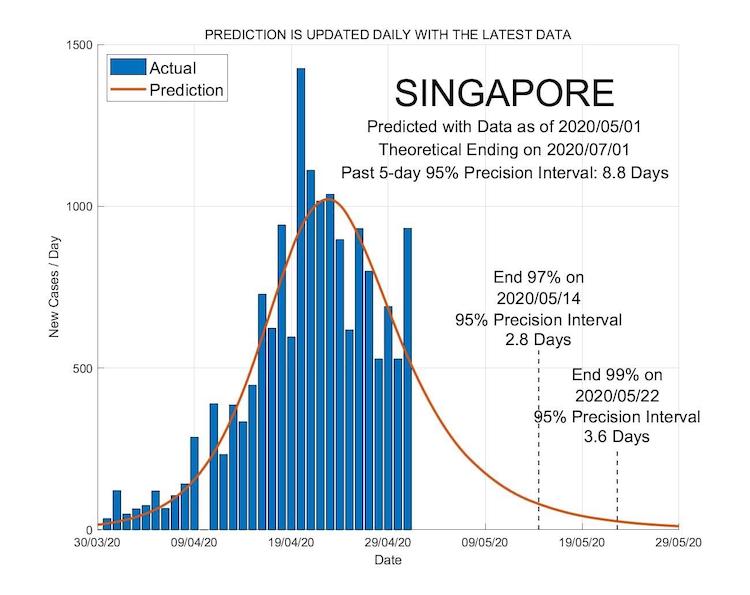 Graph via SUTD Data-Driven Innnovation Lab's website
Graph via SUTD Data-Driven Innnovation Lab's website
Across the globe, the pandemic might only end in December according to the projection on May 2.
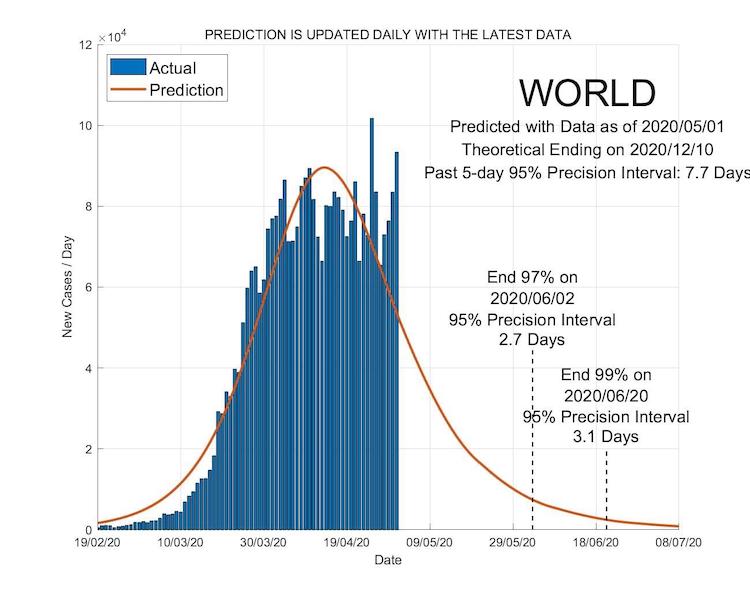 Graph via SUTD Data-Driven Innnovation Lab's website
Graph via SUTD Data-Driven Innnovation Lab's website
Here are a few more countries:
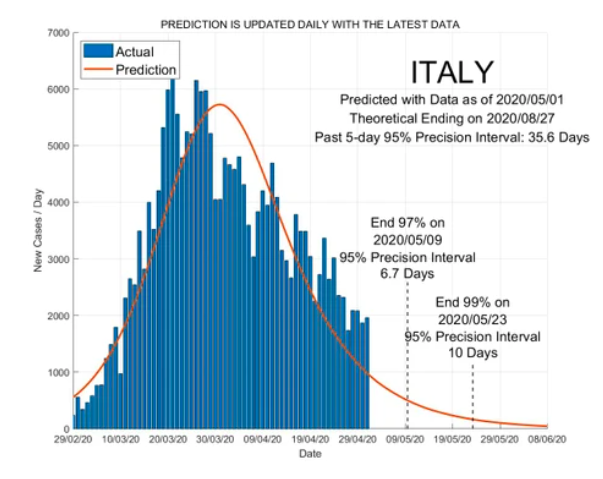
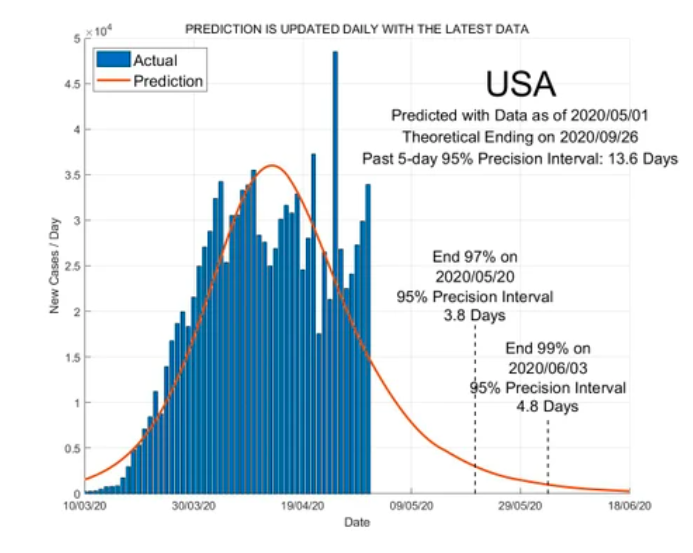
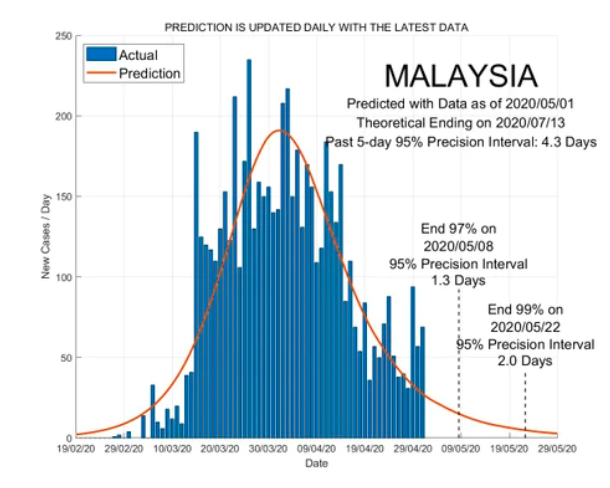
Disclaimer
A disclaimer on site states that this project has its limitations, and that the projections are not able to capture the complex nature and constant change that is happening in different countries across the globe.
Therefore, the predictions are uncertain and must be taken with caution.
They should not be used as an indicator to reduce safe distancing measures.
"*Disclaimer: Content from this website is STRICTLY ONLY for educational and research purposes and may contain errors. The model and data are inaccurate to the complex, evolving, and heterogeneous realities of different countries. Predictions are uncertain by nature. Readers must take any predictions with caution. Over-optimism based on some predicted end dates is dangerous because it may loosen our disciplines and controls and cause the turnaround of the virus and infection, and must be avoided."
You can read the full paper here.
Broad level data
In a press conference on May 1, Kenneth Mak, the Director of Medical Services in Ministry of Health (MOH) addressed a question from media regarding the projections from SUTD regarding when the pandemic would end.
Mak said that the data that was used by the team at SUTD was very broad level high level data and "may not necessarily represent the actual way in which an outbreak progresses within a country".
He then highlighted that there are two different trajectories for Singapore, as the outbreak among foreign workers in the dormitories is progressing differently from community cases.
While the projections might not give "a full and accurate picture", Mak acknowledged that "these projections are useful in, in terms of depicting that in fact, there's still a long way to go".
Top photos via Sarthak Navjivan/Unsplash
If you like what you read, follow us on Facebook, Instagram, Twitter and Telegram to get the latest updates.
